Stage Designing: A Comprehensive Exploration
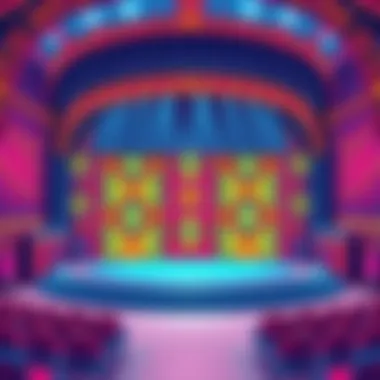
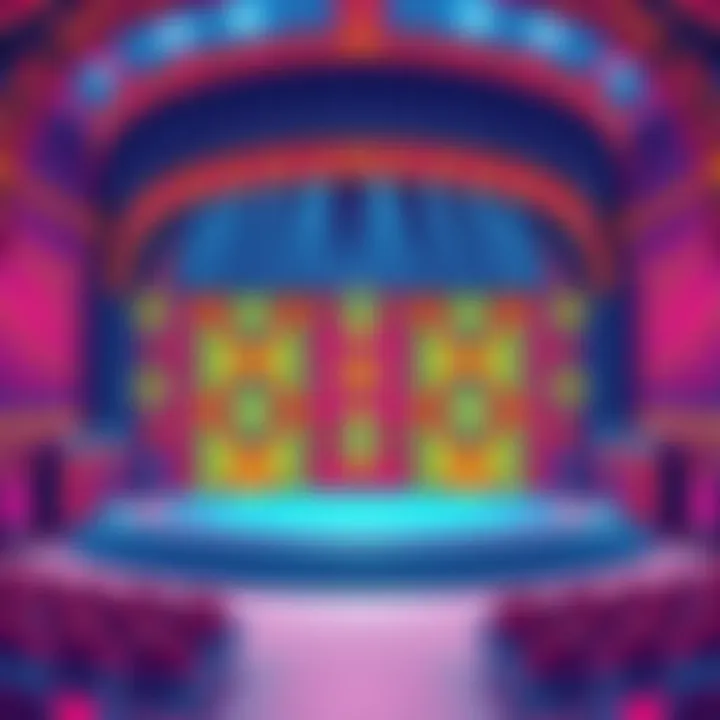
Intro
Stage designing is an intricate dance of creativity and technical skill, often overshadowed by the performances they help bring to life. The realm of stage design stretches back centuries, shaped by cultural shifts, technological advances, and artistic movements. This article embarks on a deep dive into the multi-layered world of stage designing, offering readers a panoramic view of its evolution, key elements, and the complex yet rewarding processes behind it.
Behind every unforgettable show lies the painstaking work of stage designers, whose vision crafts the environment in which stories unfold. This piece will peel back the layers—exploring not just the history of stage design but also the current trends, innovations, and practices that professionals embrace today. We'll step into the shoes of these artists and delve into the elements that stitch the fabric of each production together.
By the end of this journey, readers will have a clearer picture of why stage design matters so much. It's not merely about aesthetics; it draws a direct line to the audience's experience, transforming mere scenes into soulful stories. Let’s jump right in and look at what’s happening today in the intersection of technology and artistry in stage design.
Preamble to Stage Designing
Stage designing is a central pillar in the theater and performance arts, shaping not merely the visual landscape but also the emotional and narrative framework of a production. This aspect of theater works hand in hand with lighting, sound, and even costume choices to create an immersive experience that resonates with the audience. The study of stage design offers insights into the evolution of artistic expression and its response to cultural shifts.
Definition and Scope
Stage designing can be defined as the art and science of creating the physical space in which theatrical performances occur. This encompasses the design and arrangement of sets, props, lights, and even the costumes worn by actors. The scope of stage design is vast; it applies not just to theater productions but also to concerts, film, television, and dance performances. Each project brings its own requirements and challenges, from an intimate black-box theater to grand outdoor festivals. Understanding this breadth allows designers to adapt and innovate according to the needs and context of the performance.
"A stage designer is both an artist and a problem-solver, merging creativity with technical skill to articulate visions that transport audiences to different worlds."
The Importance of Stage Design
The importance of stage design in the realm of performance cannot be overstated. It plays a crucial role in crafting the atmosphere and mood of a production. A well-designed stage enhances the storytelling by creating an environment that allows the audience to lose themselves in the narrative. Consider a tragic play set in a decrepit mansion; the decaying walls, muted colors, and dim lighting collectively evoke the somber nature of the tale.
Moreover, stage design is vital in delineating characters and their journeys. Different settings signify shifts in power dynamics, relationships, and emotional phases. Think about how a bright, lavish ballroom conveys celebration, while a shadowy alley can suggest danger and secrecy. Through thoughtful design elements, the stage becomes a canvas on which stories are painted, providing visual cues that deepen the audience's understanding and connection to the performance.
Additionally, with the rise of technology, the integration of multimedia and innovative materials is reshaping traditional methods of stage design. Designers are leveraging projection mapping, virtual reality, and even interactive elements to create engaging environments. This not only captures the attention of tech-savvy audiences but also opens new avenues for creative expression and collaboration.
In summary, introducing stage design requires an appreciation of its definition, scope, and critical importance in various forms of performance. As culture evolves, stage design will continue to adapt, pushing boundaries and redefining aesthetics in the performing arts.
Historical Context
Understanding the historical context of stage designing is crucial as it lays the foundation for contemporary practices and innovations in the field. Every element of stage design today is influenced by past traditions, techniques, and cultural evolutions. The trajectory from ancient practices to modern-day advancements in stage design reflects societal shifts and technological progressions, allowing us to appreciate how the art form has adapted over time. This section will explore the rich tapestry of historical milestones that have shaped stage design, emphasizing the importance of cultural influences, technical evolutions, and creative breakthroughs.
Ancient Civilizations
In ancient civilizations, stage design was closely tied to religious and societal rituals. The Greeks were particularly notable for their contributions, developing elaborate theatres that not only showcased performances but also served as community gathering spaces. Theatre of Epidaurus, for example, famously boasted acoustic innovations that are still marveled at today. Set design consisted primarily of simple props and backdrops made from materials readily available at the time. However, the significance of these early designs cannot be overstated. They were interactive spaces where audiences and performers engaged in communal storytelling.
"The ancient stage was not merely a platform; it was a living entity where society mirrored itself through performance."
The Romans inherited and expanded on Greek designs, integrating grandiose elements such as high porticoes and multi-level stages. These developments were not only about spectacle but also reflected social hierarchies. The layout of the stage often indicated the status of the performers, showcasing the deep connection between the audience, the performers, and the spatial design of the venue.
Renaissance Innovations
Fast forward to the Renaissance period, and we start witnessing groundbreaking innovations that altered the course of stage designing irrevocably. This era was marked by a renewed interest in classical arts and sciences, leading to a blend of artistic expression and engineering mastery. The introduction of perspective in set design, for example, allowed designers to create a sense of depth on flat surfaces, transforming the visual experience for audiences.
One notable figure in this period was Filippo Brunelleschi, whose principles of linear perspective greatly influenced stage backdrops and set layouts. The stage itself evolved from a simple platform to a more complex arrangement that involved intricate scenery, movable parts, and layered designs. This was the dawn of viewing angles and sexual perspective that are integral to stage design today.
With theatre companies like the Comédie-Française emerging, set design became a collaborative effort aimed at enhancing the narrative while providing a more immersive experience.
Modern Developments
Modern developments in stage design have pushed the boundaries of traditional practices, influenced chiefly by technological advancements. The introduction of electric lighting revolutionized how stages are viewed. Once, stage performances were limited by daylight; now, with electric bulbs, lighting designers could manipulate mood, influence time of day, and highlight specific actions. Modern trenchers developed lighting plots that allow for dynamic changes, bringing stories to life in ways unimaginable in earlier times.
Sound design has seen an immense shift with the integration of technology, creating multisensory experiences. The use of digital soundscapes and microphones enhances auditory perceptions, allowing for clarity and depth that supports the storytelling.
In recent times, we’ve also witnessed the rise of digital and multimedia elements. Designers now experiment with projection mapping, melding visual art into live performance. This intersection of technology and creativity reflects a modern understanding that stage design is not merely about aesthetics; it’s about crafting an experience that resonates deeply with the audience.
As we look towards the future, it's apparent that historical contexts offer essential insights. They guide new interpretations and adaptations of stage design, making it a continually evolving art form.
Key Elements of Stage Design
Stage design is a vibrant tapestry woven from various crucial elements that collectively enhance the visual storytelling of performance arts. Each aspect, from the backdrop to the finer details of costumes, plays an integral role in shaping the audience's perception and emotional response. This section will delve into the vital components of stage design, focusing on their significance, interrelationship, and the thoughtful considerations that come into play.
Set Design
Set design forms the physical space where actors perform; it is the heartbeat of the stage. A well-crafted set constructs an environment that can transport audiences from their seats into a different time or place. Think about how the grandiose sets from productions like "Les Misérables" might evoke a particular emotion or sense of history, wrapping viewers in the essence of 19th-century France.
When designing sets, several factors need attention:
- Theme Relevance: The set should align with the narrative. For instance, a minimalist staging often works to highlight powerful performances, while elaborate sets might serve to immerse an audience in rich detail.
- Functionality: It’s key that sets allow for smooth transitions and are safe for performers. Movable pieces can also add dynamism to a show, creating ever-changing scenes.
- Aesthetic Appeal: Visual elements like color palettes, textures, and forms contribute to the overall mood. An enchanting forest might be achieved with greenery, soft lighting, and scenic painting that brings it to life.
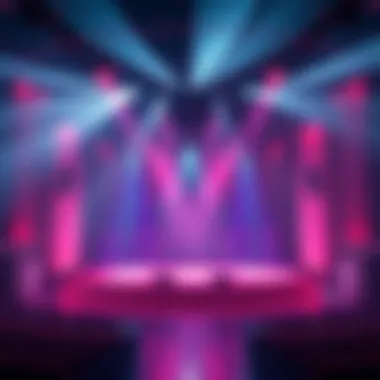
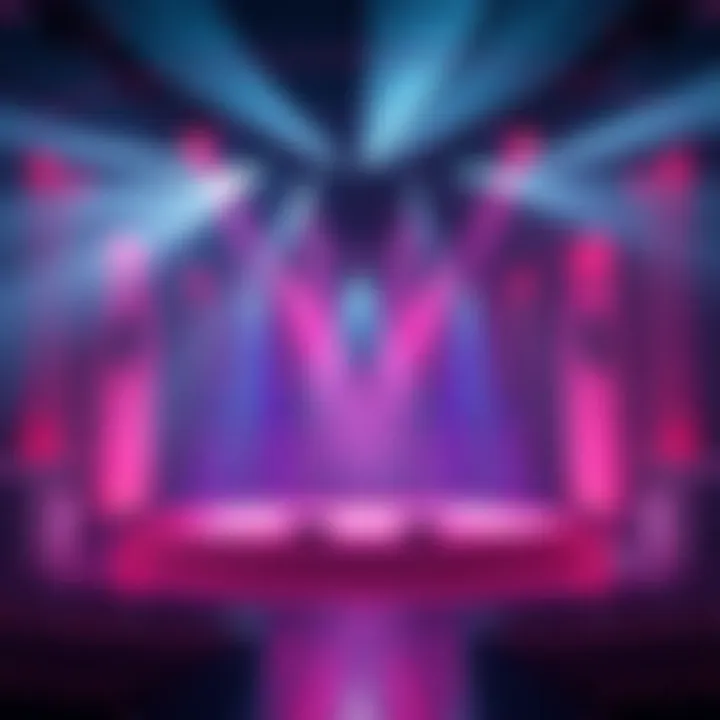
Lighting Design
Lighting design does not simply illuminate the stage; it shapes the atmosphere and evokes emotion. The interplay of light and shadow can create tension or intimacy, guiding the audience's focus. Imagine a scene where a spotlight shines upon a solitary character, accentuating their vulnerability amid a darkened stage, this is the power of light at work.
Key considerations include:
- Intensity and Color: Different shades can evoke various emotions. A warm amber might create a cozy environment, while sharp, cold blue lighting could suggest alienation or danger.
- Direction: Where the light comes from can profoundly affect the scene. Side lighting can create depth, while backlighting can outline shapes and enhance drama.
Sound Design
Sound design envelops the audience in an auditory experience that complements the visual feast. Whether it's the gentle rustling of leaves or the cacophony of city life, soundscapes draw viewers deeper into the narrative. Consider the iconic use of silence in dramatic moments; it’s a powerful tool that can build tension or highlight a pivotal moment.
Aspect to bear in mind include:
- Foley Effects: These are created to enhance realism, like footsteps on gravel or ambient noises that ground scenes.
- Musical Scores: A well-placed song can evoke feelings tied to specific moments, enriching the emotional layers of the performance.
Costume Design
Costume design can often be overlooked but is essential in expressing a character's identity, status, and emotional state. Each character’s outfit takes audiences deeper into their psyche while setting the tone for the world they inhabit. Think of how the tattered clothes of a character in "The Grapes of Wrath" vividly convey hardship.
Important elements to consider:
- Characterization: Costumes should reflect personal traits; a noble prince might wear ornate fabrics, while a street urchin might don threadbare clothing.
- Historical Accuracy: Costumes need to be relevant to the era depicted. An anachronistic costume can jar the audience and detract from the immersion.
Props and Accessories
Props furnish the stage with authenticity and depth, providing tangible items that a character interacts with. They contribute significantly to storytelling, often holding symbolic meaning. The significance of a prop, such as a letter or a weapon, can alter the narrative’s trajectory and audience interpretations.
Key considerations are:
- Practicality: Props need to be safe for use on stage, which requires careful thought in their materials and construction.
- Symbolism: Items can represent larger themes. For instance, a broken watch might symbolize lost time or regret.
The culmination of these elements forms a cohesive stage design that speaks volumes to the audience. Each facet is weighted with intent, and the designer must skillfully balance aesthetics with functionality, creating a rich immersive experience. The interplay of set, lighting, sound, costumes, and props works together as a unified force that draws audiences into the essence of the story being told.
The Design Process
The design process in stage designing acts as the backbone of any production. It is not merely about throwing a few colors on a canvas or arranging some furniture pieces together; it is about building a tangible atmosphere that captivates audiences and amplifies the narrative. Each step in this process is meticulously woven into the fabric of the performance, and it’s crucial to understand its significance.
Concept Development
In stage design, concept development is where the magic starts. This stage is all about translating the director's vision into something visual and tactile. Here, designers engage in brainstorming sessions, exploring themes, moods, and characters. They might sketch ideas, clip magazine photos, or even create mood boards that encapsulate the intended feeling and storytelling elements.
What's critical during this phase is that designers often dive into the historical and cultural context of the production. For instance, if the play is set in the 1920s, understanding the architectural style of that time can lead to authentic elements being integrated into the design. This stage is like laying the foundation; without this solid groundwork, the entire project might crumble.
Collaboration with Directors
Once the concept has taken a shape, the collaboration between designers and directors begins to intensify. This stage is pivotal as it ensures that the design aligns perfectly with the director's artistic vision.
Collaboration is more than just meeting for a chat over coffee; it involves a constant exchange of ideas and feedback. The director might have specific cues or moments they want highlighted through design elements. For instance, they may want a stark contrast in lighting during a particular scene to emphasize a character's emotional turmoil. Designers must remain flexible and open to adjustments, blending their creative instincts with the broader narrative arc introduced by the director.
Collaboration can be the backbone of creativity. When two or more minds meld, unexpected ideas can emerge, providing fresh perspectives on traditional concepts.
Creating Technical Drawings
With a solid concept and a clear collaboration roadmap in place, the next step is creating the technical drawings. This phase is where the vision transforms into practical reality. Designers produce detailed sketches and blueprints that outline dimensions, materials, and the actual placement of set pieces.
Because stage design is three-dimensional, these drawings have to account for viewer perspectives from various angles. Additionally, technical drawings serve as a comprehensive guide for builders and crew during construction. Think of them as the blueprint for a house, without which nothing can be erected.
Materials and Resource Selection
The final piece of the design process puzzle involves materials and resource selection. This stage is where practicality meets creativity. Designers must choose materials that not only embody the visual concept but also suit the performance's requirements. For instance, heavy sets made from wood may look beautiful on stage but can be problematic when it comes to quick scene changes.
Furthermore, sustainable practices are increasingly becoming part of this selection process; designers explore eco-friendly options or repurposed materials. This not only reduces waste but also paves the way for innovative expression within the constraints of sustainability.
Innovative Techniques in Stage Design
Innovative techniques in stage design are essential to creating immersive experiences that resonate with audiences in modern performances. As stage design continues to evolve, incorporating cutting-edge technologies and sustainable practices becomes increasingly significant. These developments not only enhance visual storytelling but also deepen emotional engagement with the audience. By recognizing the shift toward contemporary methodologies, designers can push the boundaries of creativity while maintaining relevance in an ever-changing landscape.
Utilization of Technology
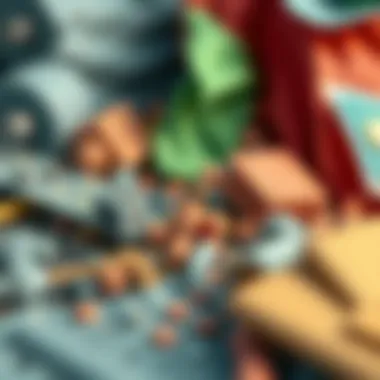
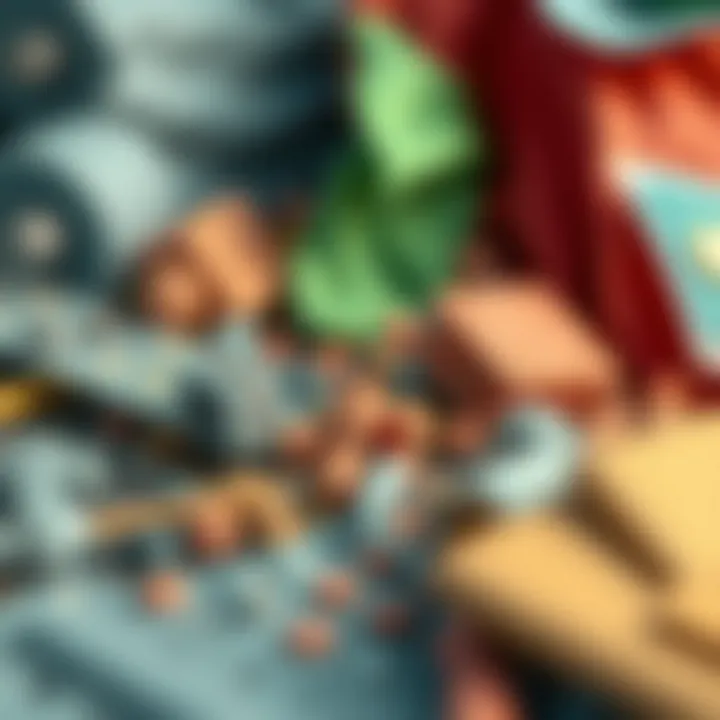
The integration of technology in stage design has transformed the creative process and the execution of performances. With tools such as projection mapping, 3D modeling, and advanced sound systems, designers can sculpt environments that were once deemed impossible. Consider an example where a set might morph from a serene forest to a bustling cityscape through projections. This element captivates the audience, breaking the static nature of traditional staging.
Moreover, using software like AutoCAD and SketchUp allows designers to visualize their concepts in three dimensions, making it easier to communicate ideas with directors and production teams.
- Benefits of Technology in Stage Design:
- Realistic simulations of the set environment.
- Opportunities for creating interactive experiences.
- Enhanced collaboration through shared digital tools.
While the benefits of technology are evident, design teams must also consider factors such as reliability during performances and audience accessibility. Technical hiccups can derail a production, making it crucial to have redundancy plans in place.
Sustainable Practices
The push for sustainability is influencing stage design like never before. As the world grapples with environmental issues, designers are rethinking their material choices and production methods. Sustainability in stage design doesn't just mean using eco-friendly materials—it also involves reusing and recycling set pieces whenever possible.
To incorporate sustainable practices, designers are exploring:
- Bamboo and Reclaimed Wood: These alternatives reduce deforestation and offer unique aesthetic qualities.
- LED Lighting: A more energy-efficient option, reducing electricity consumption significantly during performances.
- Digital Scenery: Employing screens or projections can eliminate the need for physical sets altogether.
The long-term goal is to create a sustainable cycle where designs can be reused across multiple productions, minimizing waste and maximizing artistic impact. By adopting these practices, stage designers not only lessen their environmental impact but also set a precedent for future productions.
Virtual and Augmented Reality
Virtual and augmented reality (VR and AR) are at the forefront of transforming stage design, offering novel ways to engage audiences. By adding layers of interaction, these technologies allow for an expanded realm of storytelling. Imagine an audience member wearing AR glasses that enhance their view of a set, bringing characters to life in ways that transcend traditional performance.
The potential applications of VR and AR in stage design are boundary-pushing:
- Interactive Storylines: Viewer decisions might influence the progression of a show.
- Immersive Environments: Entire performances can unfold in virtual spaces, allowing for limitless creativity.
- Audience Engagement: Shared experiences through these technologies can create wider community interactions around performances.
However, these techniques necessitate a balance; designers must ensure that technical advancements enhance rather than overshadow the narrative. Striking this balance is crucial to ensuring that audience engagement remains rooted in the story being told.
"The future of stage design lies in the blend of technological innovation and artistic integrity."
By understanding the importance of innovative techniques, designers can elevate their craft, adapting to contemporary demands while also reaching for future possibilities. This can lead to performances that not only entertain but leave lasting impressions on their viewers.
Preparing for Production
Preparing for production is a critical phase in the stage designing process. It's much more than just setting the stage; it’s about ensuring that every aspect of the production runs smoothly and effectively. The benefits of a well-planned production phase have a ripple effect, influencing everything from performer confidence to audience engagement. Here, we dive into the nuanced aspects of this pivotal stage.
Rehearsals and Adjustments
Rehearsals are the backbone of any performance. They serve as the testing ground where ideas morph into reality. During rehearsals, the dynamics between actors and the designed set begin taking shape. Given that stage design is, in many ways, a living, breathing part of the performance, adjustments are necessary and should be anticipated.
Actors may interact with the set differently than planned or may require changes to certain elements such as lighting or props for their comfort and performance optimization. Sometimes, obstacles that seem trivial can complicate things considerably during a live performance. For instance, if an actor has to make a rapid exit, the ease with which they navigate the set can greatly affect the pacing and flow of the show. A swift exit through a narrow doorway can become a source of comedic relief or, worse—an opportunity for mishap.
An ongoing collaboration between designers and directors ensures that feedback from rehearsals leads to valuable adjustments. This might mean reshaping a set piece to facilitate movement or making lighting tweaks to improve visibility and emotional impact.
Recommendations during this phase can include:
- Frequent check-ins: Regular discussions between the director and design team to evaluate what's working and what isn't.
- Document Adjustments: Keep records of any changes made during rehearsals for consistency.
- Trial Runs: Conduct a few run-throughs to test the cohesiveness of stage elements.
"Adjustments made during rehearsals can often be what turns a good performance into a truly memorable experience."
Final Touches and Previews
As rehearsals wind down, the process of adding final touches begins. Finalizing elements is like the proverbial cherry on top—it can elevate the entire production. This stage of the preparation aims to refine details so that every element shines. This might include adding finesse to lighting cues, ensuring the set pieces are properly aged or distressed, or adjusting color schemes to create the perfect mood.
Dress rehearsals are key during this phase. They help to simulate the actual show experience, allowing crew and cast members to understand the flow of the performance with the final design setup in place. Not only do these rehearsals identify any last-minute issues, but they also provide a critical opportunity for the director to assess overall aesthetic appeal and audience impact.
Key aspects to focus on during this time:
- Final Lighting Setup: Adjust focusing, color gels, and intensity to ensure that no detail is lost under the spotlight.
- Sound Checks: Ensure acoustics are suitable, and that sound effects integrate seamlessly into the performance. This might involve checking the volume levels of microphone equipment or running through any sound effects that will be utilized.
- Set Query: The design team should ensure all pieces of the set are secure and that movable elements operate smoothly without issues.
- Continuity Confirmation: Make sure that props and set pieces align with the storyline—historical accuracy or thematic consistency can’t be overlooked in the final presentation.
Preparing for production is thus a meticulous balancing act. Designers, directors, and performers need to work in unison to create a seamless experience on stage. Every adjustment, whether big or small, can lead to a more polished and engaging production, ultimately leading to heightened audience experience. This culmination is where the art of stage design truly comes into its own.
Impact on Audience Experience
Stage designing plays a crucial role in shaping how an audience perceives and connects to a performance. The physical environment crafted by designers influences the emotional and cognitive responses of viewers, making it not merely an aesthetic endeavor but a fundamental aspect of theatrical storytelling. Each element is carefully curated to enhance the viewer's immersion and engagement, ensuring a memorable experience far beyond the final bow of the cast.
Emotional Engagement


Emotional engagement is the linchpin of effective stage design. A well-crafted set can evoke powerful feelings that resonate throughout the audience. For instance, a dystopian setting featuring stark, angular structures and dim lighting can induce a sense of foreboding, while a vibrant, whimsical backdrop can invoke joy and nostalgia. This impact goes hand in hand with characters' emotional arcs, fueling empathy and connection.
- Color Palette: The strategic use of colors alters perception; warm tones can create intimacy, while cool tones may evoke sadness or contemplation.
- Textures and Materials: The choice of materials imparts sensory experiences that can correlate with a narrative—smooth surfaces for elegance or rugged textures to suggest decay and disorder.
- Spatial Dynamics: How space is executed can emphasize loneliness or togetherness; open spaces can amplify isolation while cluttered environments may enhance chaos.
It is important to note that the immediate visual stimuli are just the tip of the iceberg. As viewers, we tend to soak in the atmosphere and nuances before the storyline fully unfolds.
Designers must understand the essence of the story to craft environments that resonate emotionally. Tailoring these elements helps translate complex narratives into palpable sensations for the audience, creating a bridge between their realities and the world presented on stage.
Enhancing Narrative
Stage design goes beyond aesthetics; it underpins and enhances the narrative structure. Well-thought-out designs can subtly foreshadow themes and events, guiding the audience's understanding of the storyline without explicit dialogue. The integration of visual cues helps audiences bridge the gaps in the narrative, creating layers of meaning that enrich the overall experience.
- Symbolic Elements: Props or set pieces often carry deeper meanings; a crumbling wall can symbolize the protagonist's shattered dreams, while a vibrant tree may represent hope and rebirth.
- Use of Space: Designers manipulate space to reflect character relationships; for example, a wide separation between two characters may imply emotional distance, whereas close proximity indicates intimacy.
- Visual Metaphors: The design can serve as a metaphorical representation of themes. A rotating stage can symbolize the passage of time or change of perspective, seamlessly integrating with the unfolding plot.
A thoughtfully designed stage subtly reinforces the themes and emotions of the narrative. By immersing the audience in an environment that speaks to the underlying motifs, stage designers craft a cohesive storytelling experience that resonates on a much deeper level.
In the constantly evolving world of stage designing, the interplay between design and audience experience remains an essential focus. As theater aims to reflect and challenge societal norms, the role of stage design as a connector of emotions and narratives becomes ever more vital.
Future Trends in Stage Designing
The world of stage design continuously evolves, reflecting changes in technology, audience expectations, and artistic expression. As every designer knows, anticipating future trends can prove critical to staying ahead in an industry that thrives on innovation and creativity. Understanding these trends not only shapes the designs of tomorrow but also helps designers create immersive experiences that captivate audiences.
Integration of Multimedia
The merging of multimedia elements into stage design is not just a passing fad; it's a significant shift in how stories are told on stage. This integration allows for a seamless blend of various media forms, such as video projections, live feeds, and digital art. For instance, using projection mapping can transform a plain set into a dynamic environment, instantly shifting the mood or scene without the costly need for physical alterations.
Incorporating audio-visual elements enriches the sensory experience. By layering soundscapes with visual content, designers can create a more immersive atmosphere that enhances the storytelling aspect. Think of Mike O’Connell, whose work on The Lion King used sophisticated video backdrops to deepen the connection between characters and their settings. This way, the audience feels not just like spectators but like participants in the unfolding drama.
Benefits of Multimedia Integration
- Enhanced Engagement: Audiences find themselves more engrossed in performances when visuals and sounds mesh fluidly.
- Flexibility in Sets: Multimedia allows designers to pivot easily between scenes, maintaining a pace that aligns with contemporary audience attention spans.
- Creative Freedom: Designers can push boundaries, experimenting with forms and styles that were previously unfeasible.
Experimental Spaces
Looking ahead, experimental spaces will revolutionize the traditional ideas of stage settings. These spaces often break free from conventional theater layouts, creating unique realms that invite rethinking of audience participation. From found spaces to immersive environments that surround viewers, the aim is to foster new forms of interaction.
Take, for example, the trend towards immersive theater, where spectators find themselves within the narrative world. Productions such as Sleep No More have already changed the game, allowing audience members to roam freely through various settings, experiencing different perspectives of the story. This unanchored approach challenges the passive viewing experience, blurring the lines between audience and performance.
Considerations for Experimental Spaces
- Space Utilization: Effective use of non-traditional venues requires careful planning and an understanding of spatial dynamics.
- Audience Interaction: Designers must consider how to guide audiences through the experience, often without a traditional script to follow.
- Safety Measures: With new environments come potential risks; hence, safety needs to be paramount in the design process to ensure risk-free enjoyment for all participants.
Creating future stages that incorporate multimedia and experimental approaches is essential as technology advances and audiences evolve. This continual transformation will unlock new ways of expression, shaping the visual and auditory fabric of performing arts for years to come.
"The future of stage design lies in our ability to blend technology with artistry, crafting experiences that resonate on multiple levels." - Anonymous
For further insights into trends in multimedia and immersive experiences in theater, check out The Guardian for recent articles or Wikipedia for a historical context.
Consider engaging with communities on Reddit to share ideas and get feedback on innovative designs.
Epilogue
When considering the vast world of stage designing, the importance of effectively concluding such a discussion cannot be overstated. This article has traversed an intricate landscape, unveiling layers of historical context, key elements, and innovative techniques that have formed the backbone of contemporary stage design.
The art of stage design serves as the soul of performance arts, weaving visual storytelling with emotional engagement. Its impact on audience experience is profound. Here’s why understanding the nuances of stage designing matters:
- Integration of Elements: Each design aspect—be it lighting, sound, or set design—works harmoniously to enhance the narrative. Understanding these interconnections deepens appreciation and informs future enhancements.
- Emotional Resonance: The emotional response elicited from expertly crafted stage design does not merely amplify a performance; it transforms it, ensuring that the audience is not just passive observers but active participants in the story being told.
- Innovative Potential: With emerging trends, like virtual reality and multimedia integration, the future of stage design is poised for exciting developments. Familiarity with these tools allows creators to push boundaries and redefine performance experiences.
In summary, this exploration sheds light on how crucial stage design is for anyone who seeks to understand or partake in the performance arts. It reminds us that behind every production lies a compelling story meticulously crafted through design, and recognizing this artistry enriches both creators and audiences alike.
Reflecting on the Art of Stage Design
The intricate dance between artistry and technicality defines the essence of stage design, making it a fascinating field of study and practice. When one reflects on this domain, several aspects come into play:
- Collaboration and Communication: The relationship between designers, directors, and performers is vital. Frequent feedback loops result in a design that resonates with the vision of the production.
- Cultural Impact: Stage design can reflect societal values and challenges, acting as a mirror to the times. Consequently, understanding its evolution fosters discussions about cultural relevance in the performing arts.
- Aesthetic Experience: The visual elements of a production contribute significantly to its overall aesthetic. Designers often draw inspiration from various art forms, which enhances the richness and diversity of performances that the audience gets to experience.
In essence, the art of stage design doesn't merely focus on constructing a visual interface; it builds an immersive journey that invites audiences to explore deeper meanings and connect emotionally with the narrative. Understanding these intricacies not only benefits those involved in stage production but also enriches the experiences of those who partake in its offerings.
"To create is to live twice." — Albert Camus
Delving into the nuanced aspects of stage design is not just about appreciation; it's about recognizing the layers that transform a simple performance into an unforgettable experience. This exploration is continuous, ensuring that stage design remains a vital conversation in the ever-evolving landscape of performance art.
For more insights into the complexities of stage design, one can refer to resources like Britannica or explore discussions on Reddit.
Understanding stage design helps us honor the intricate craftsmanship behind every performance, propelling continued dialogue and innovation within this vibrant field.







